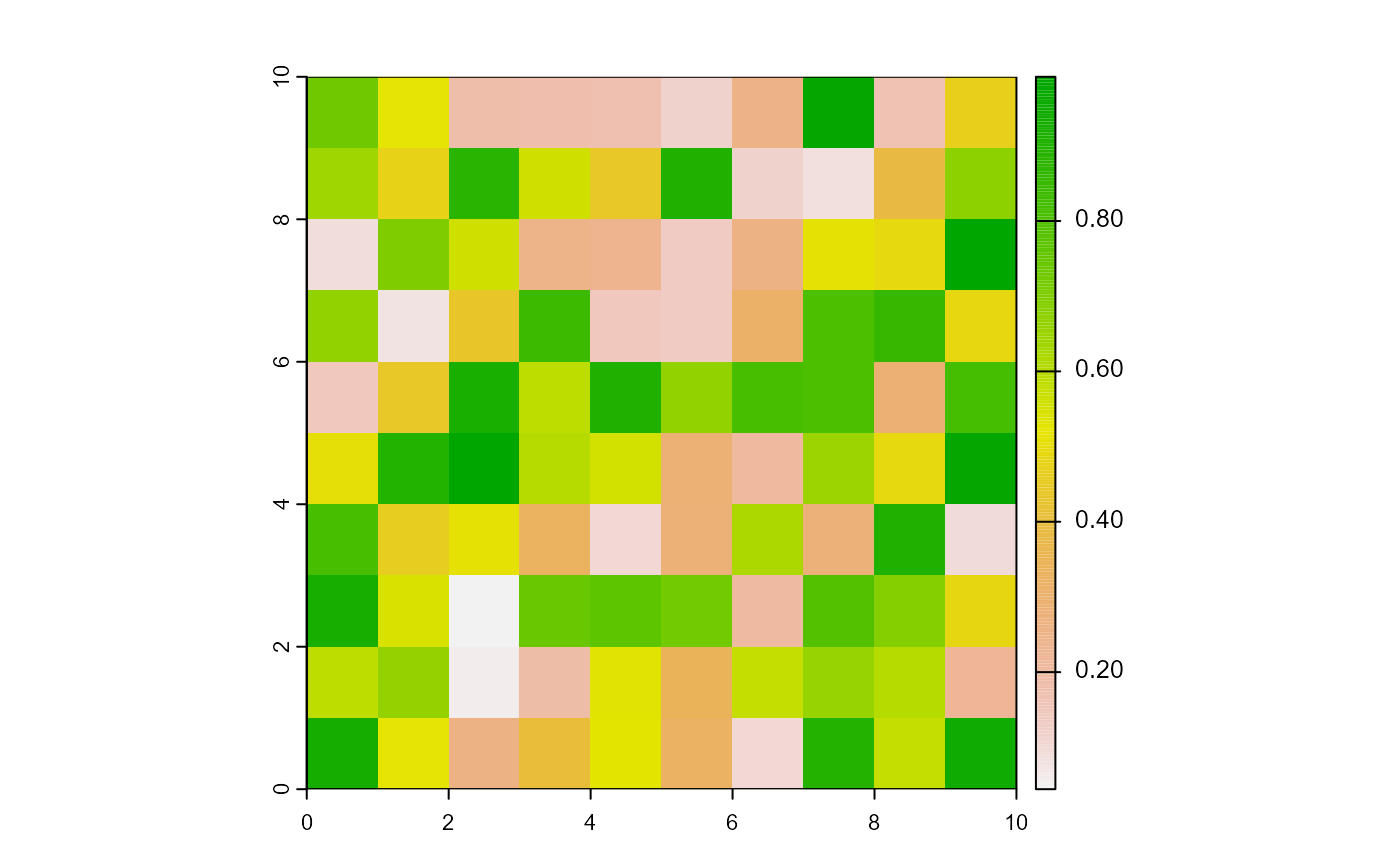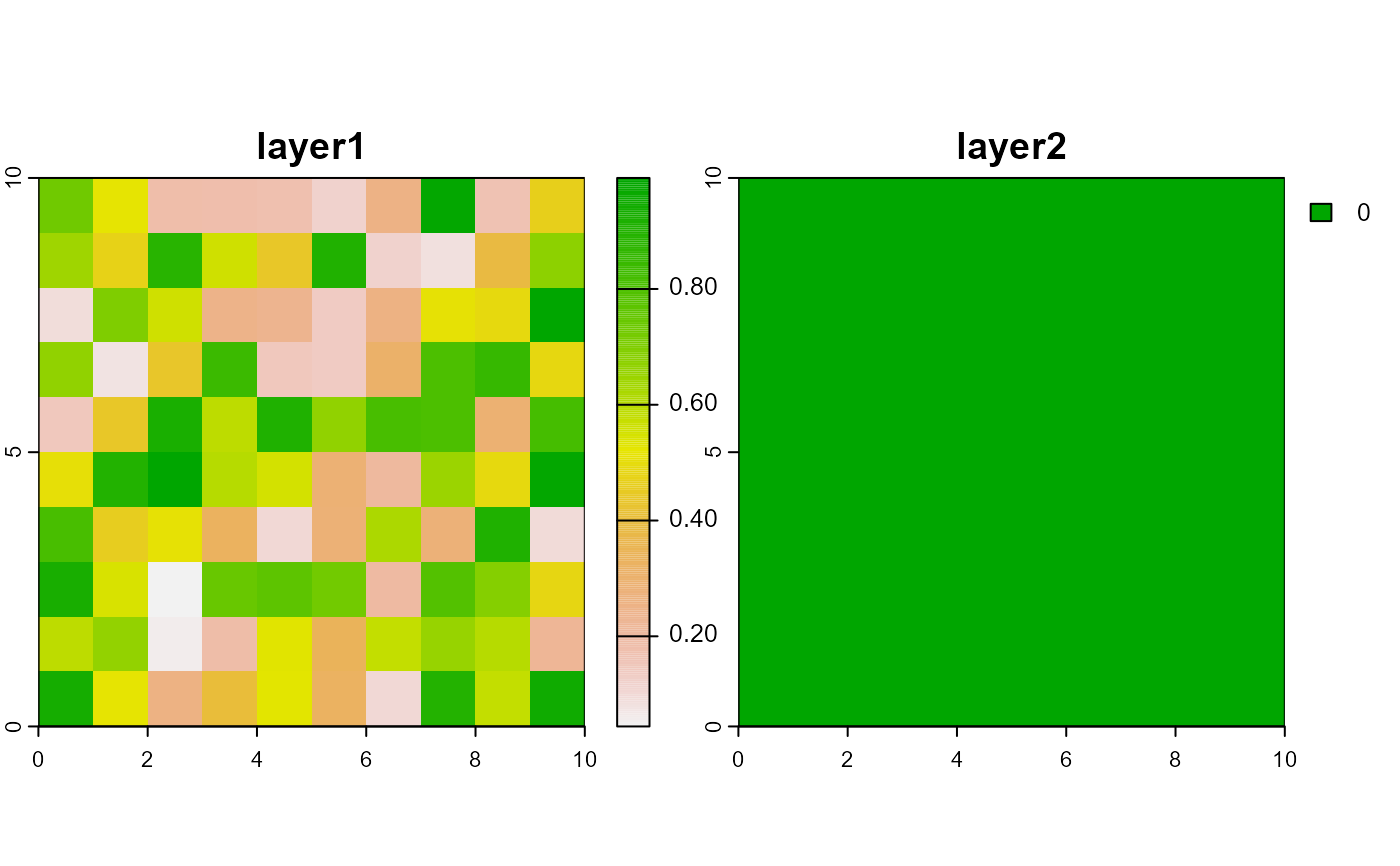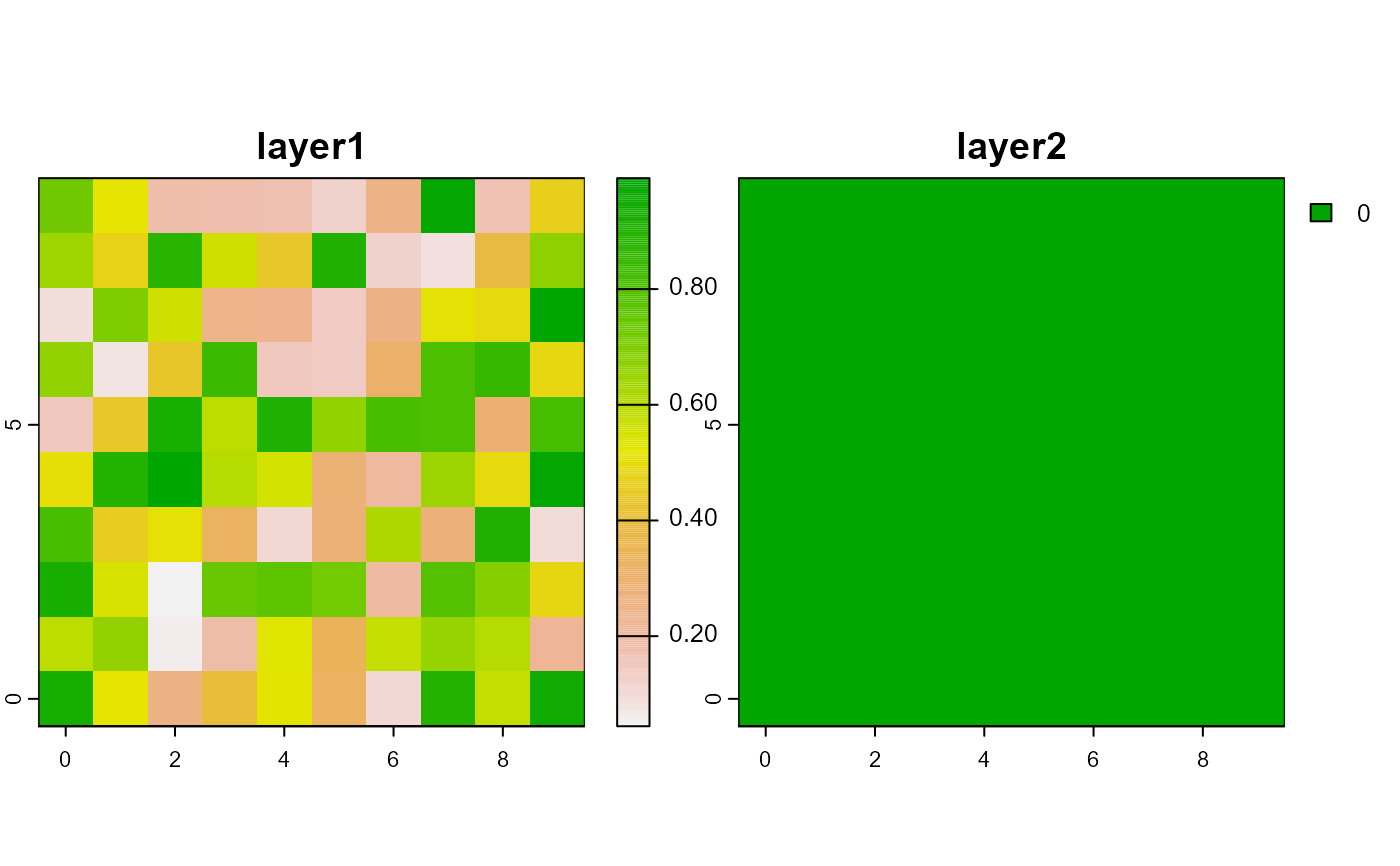Convert a SpatRaster object into a worldMatrix or worldArray object
Source: R/world-functions.R
spatRast2world.RdConvert a SpatRaster object into a worldMatrix
object or a worldArray object depending on the number of layers of the
SpatRaster object.
spatRast2world(raster)
# S4 method for SpatRaster
spatRast2world(raster)Arguments
- raster
SpatRasterobject.
Value
WorldMatrix or worldArray object depending on the number of layers
of the input raster.
Patches value are retained from the raster.
Details
See help("worldMatrix-class") or help("worldArray-class")
for more details on the classes.
If the `SpatRaster` object has only one layer, a `worldMatrix` object
will be returned. If the `SpatRaster` object has more than one layer,
layers must have unique names and a `worldArray` object will be returned.
The number of rows and columns, as well as the cell values of the `raster`
are kept the same. However, to match the coordinates system and resolution of a
`worldMatrix` or `worldArray`, the grid is shifted by a 1/2 cell to have
round coordinate values at the center of the patches and patch size is equal to (1,1).
The bottom left corner cell coordinates of the `worldMatrix` or `worldArray`
will be (pxcor = 0, pycor = 0).Examples
library(terra)
#> terra 1.7.46
#>
#> Attaching package: 'terra'
#> The following objects are masked from 'package:NetLogoR':
#>
#> patches, wrap
r1 <- rast(xmin = 0, xmax = 10, ymin = 0, ymax = 10, nrows = 10, ncols = 10)
r1[] <- runif(100)
w1 <- spatRast2world(r1)
terra::plot(r1)
 plot(w1)
plot(w1)
 r2 <- rast(xmin = 0, xmax = 10, ymin = 0, ymax = 10, nrows = 10, ncols = 10)
r2[] <- 0
r3 <- c(r1, r2)
names(r3) <- c("layer1", "layer2")
w3 <- spatRast2world(r3)
terra::plot(r3)
r2 <- rast(xmin = 0, xmax = 10, ymin = 0, ymax = 10, nrows = 10, ncols = 10)
r2[] <- 0
r3 <- c(r1, r2)
names(r3) <- c("layer1", "layer2")
w3 <- spatRast2world(r3)
terra::plot(r3)
 plot(w3)
plot(w3)
